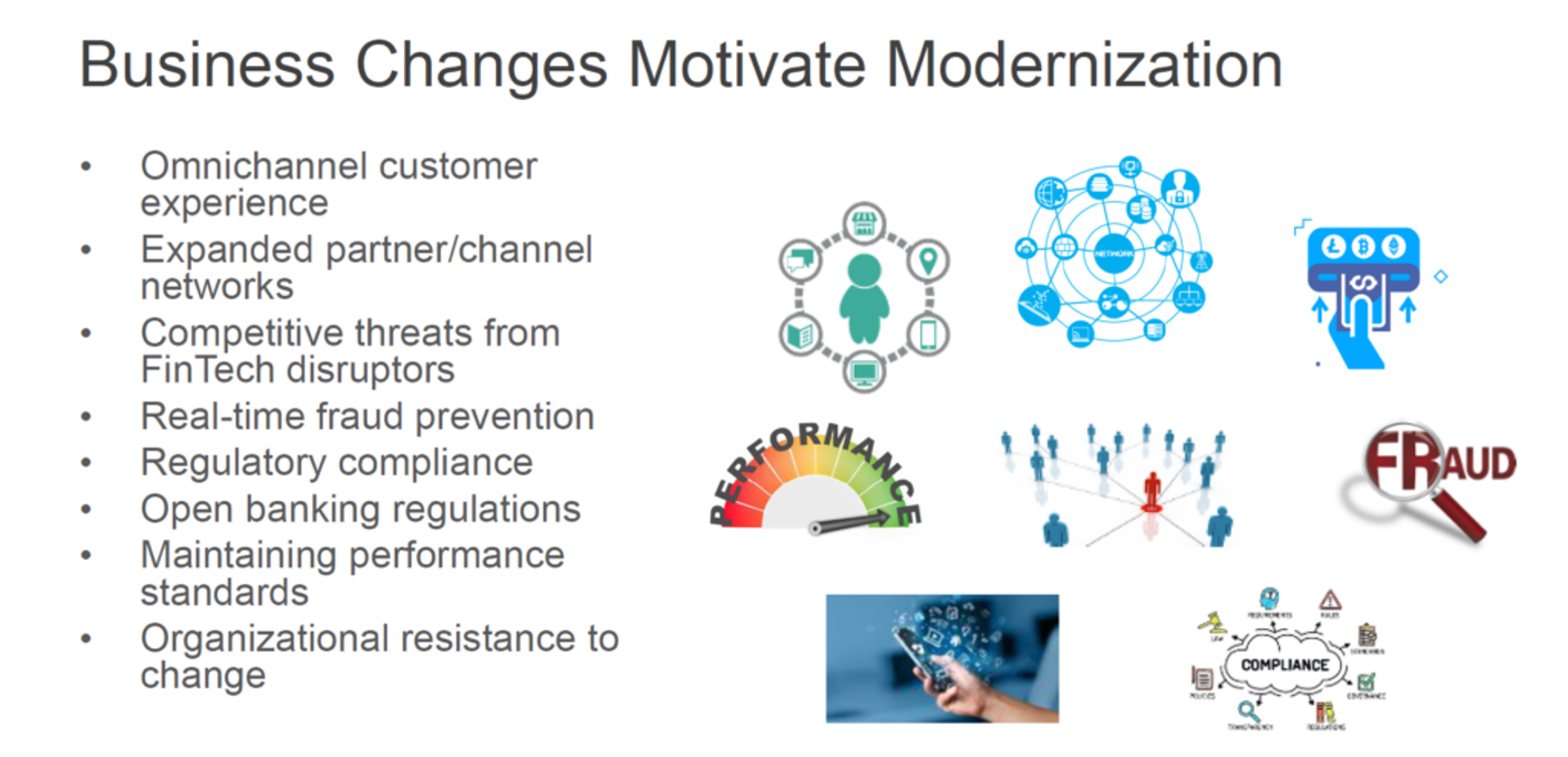Blog
Best Practices For Data Architecture Modernization in Financial Services
Best Practices for a Modern Data Layer in Financial Services is an essential white paper on the best steps to modernize from a rigid and slow IT legacy system to a modern data layer. Meet customer demands in real-time.
Redis recently took part in a webinar with data giants TDWI to discuss best practices for data architecture modernization in financial services. Leading the webinar is the world-renowned expert in information management, David Loshin, who speaks about data layer modernization frequently at different TDWI events and conferences.
Below we’ve provided insights into what was covered in the webinar on the most powerful ways a financial services organization can modernize its data layer.
The financial services industry has changed significantly
Technology has transformed the financial services industry from top to bottom. Brick and mortar are being phased out and replaced by mobile banking. Transaction processing cadence has evolved from periodic batch to real-time processing, posing a significant challenge to banks; IT legacy systems are outdated and incapable of providing a real-time digital banking experience.
This is problematic because customer expectations aren’t just sky-high, they’re in the stratosphere. The demand for a consistent real-time digital banking experience has made the financial services industry even more cutthroat and banks are struggling to meet the demands of the modern consumer with rigid legacy IT systems.
Moreover, banks are feeling additional pressure from government legislation and the market to modernize their data layers. Fintechs are agile and are reaping the rewards of having a flexible architecture that allows them to provide an omnichannel experience as well as bring new products to the market.
Banks need to modernize now to level the playing field and provide a real-time digital banking service that’s fast, easy, and accessible.
6 different ways you can achieve data architecture modernization
Modernizing your financial data layer doesn’t need to be complicated, nor disruptive. Data layer modernization follows a chronological process that begins with identifying data accessibility gaps and ends with operationalizing the data layer with microservices.
In his PowerPoint slide, David reveals the six most optimal ways a financial services organization can modernize its data layer without disruption. All of the technical components behind each method underwent a comprehensive review to crystalize the point of direction financial services should follow when modernizing the data layer.
These include:
- Identify Data Accessibility Gaps: Discovering areas where quick access to customer data is inhibited.
- Achieve a Consistent Omnichannel Customer Experience: Ensuring the four fundamental expectations associated with a consistent real-time omnichannel experience are met.
- Information Models for Real-Time Processing: Maintaining accessibility and interoperability with different information models that support real-time processes.
- Adopting Modern Computing Service: Understanding the architectural differences and how to transition from developing monolithic systems.
- Embrace Data Platforms for Low-Latency Access: Discovering the key characteristics of an elite real-time data platform with low-latency access as well as knowing how to leverage it in your architecture.
- Incorporate an Operational Data Layer: Uncovering how to operationalize the data layer with microservices and how to provide rapid access to those systems.

A preview of our webinar with TDWI
Data Architecture Modernization Use Cases
Many banks need to modernize their data layer to overcome myriad challenges in today’s fast-paced digital environment. Some of the world’s leading banks have recognized IT legacy systems as performance inhibitors and have modernized their data layers with Redis Enterprise to overcome the biggest obstacles standing in their way.
Redis’ Senior Solutions Marketing Manager Henry Tam shares a number of use cases to reveal what results banks can expect when using Redis Enterprise to modernize their data layer. Henry explores how Redis Enterprise is used to supercharge performance levels in each use case:
Supercharging the customer experience
Thanks to Redis Enterprise, customers enjoy an omnichannel experience that allows them to seamlessly access a range of different digital products and services in real-time, regardless of their location, bank accounts, mortgages, loans, investments, and much more.
Maximizing identity management systems
Data sharing with third parties is mandatory for providing customers access to innovative digital solutions that augment the user experience. But doing so exposes financial institutions to the possibility of cybercriminals infiltrating their data.
In this use case, Henry highlights how Redis Enterprise is used to shield customer information from cyber-criminals while sharing data with third-party organizations. This involves improving the developer experience with granular access to APIs, data, and resources.
Boosting manual investigation processes
Henry explores how RediSearch is used to speed up manual investigations by sifting through reams of data with hyper-efficiency, allowing it to identify any suspicious patterns that would indicate fraudulent activity.
Clamping down on fraud with real-time data
It only takes a few seconds for fraudsters to commit online theft. Therefore, fraud detection is entirely dependent on the speed at which a bank can identify and react to suspicious data patterns. Henry unpacks how Redis’ ability to guarantee real-time data enables a large bank to swiftly dispel fraudulent activity through real-time digital identities, AI models, and more.
FAQ
A: Data modernization is the process of moving siloed data from legacy databases to modern cloud-based databases. Data modernization allows organizations to be agile, and eliminate inefficiencies, bottlenecks, and unnecessary complexities surrounding legacy systems.
A: A modernized data platform is one that provides efficient data migration, speedy ingestion, scalable, multi-structure model support, offers flexible deployment choices, and optimized storage efficiency. A modern data platform like Redis Enterprise enables interactive customer experiences, enhanced risk management, and advanced near real-time analytics for fraud detection.
A: Big data, AI, and analytics play critical roles in speeding up enterprise data-driven decision-making for faster time to insight. They require a modern in-memory NoSQL data platform to deliver that real-time data. Enterprises can deploy modern databases as a managed service (DBaaS) in any cloud to take advantage of the scalability, analytics, external data, and AI/ML services offered by the cloud providers.
Take the path toward data architecture modernization.
Get started with Redis today
Speak to a Redis expert and learn more about enterprise-grade Redis today.
